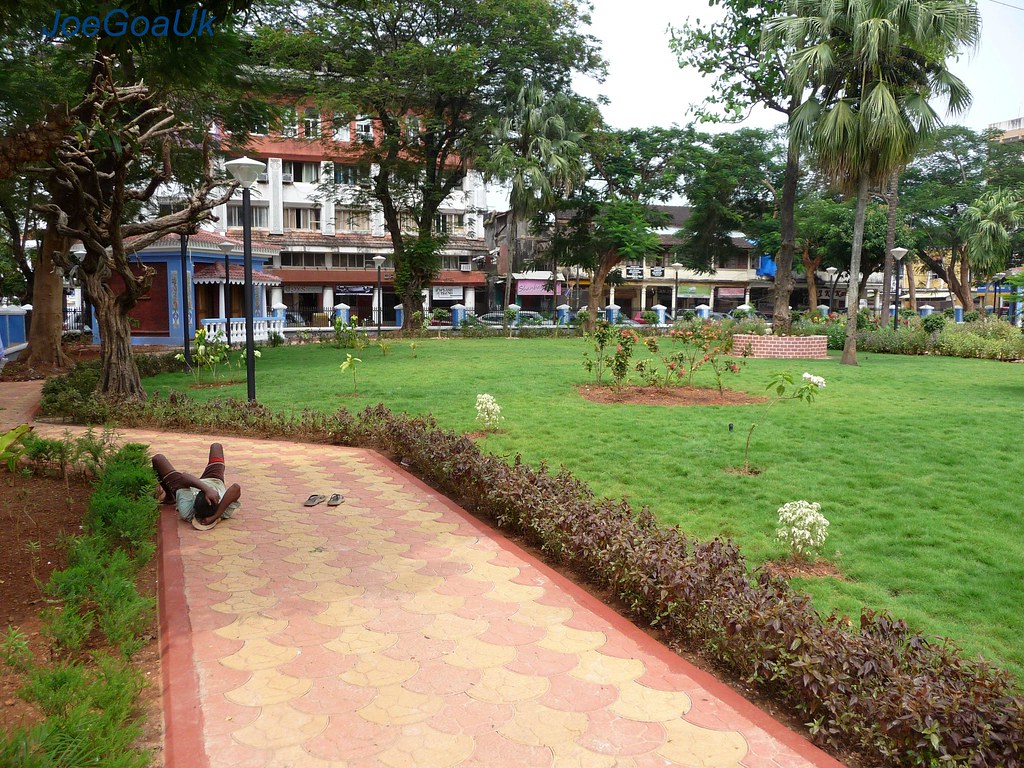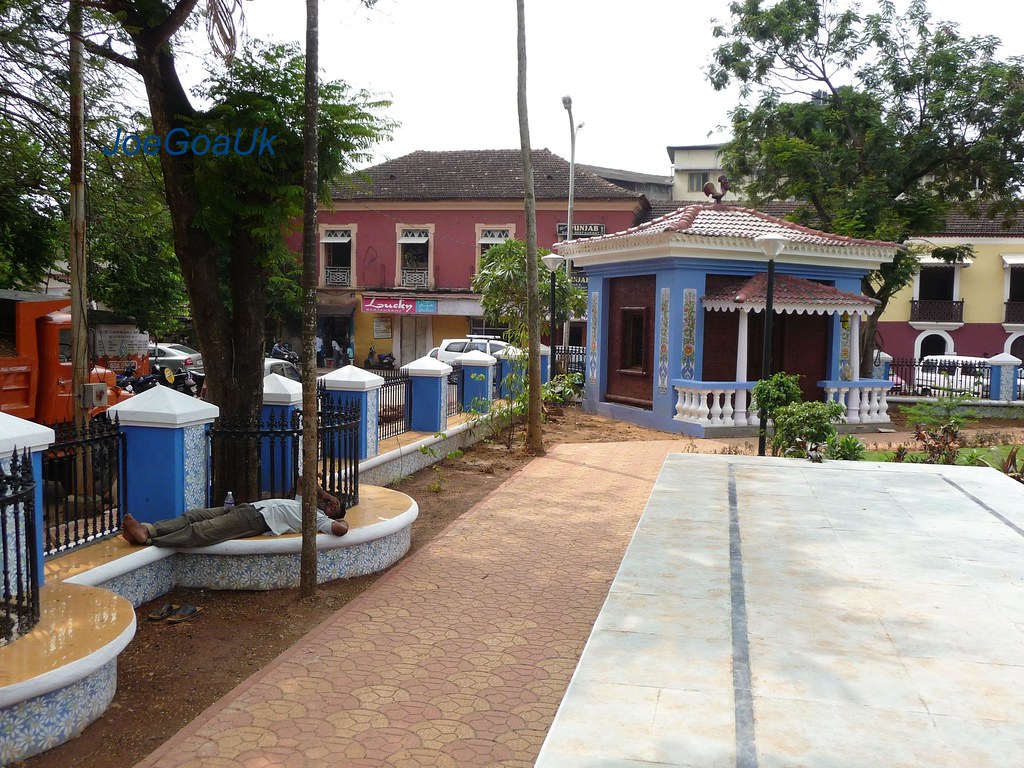The drama this time round is the docking of the Portuguese Naval ship NRP Sagres in Mormugão. Added to this, these Johnnies have decided to protest a film festival being conducted by the Instituto Camões, as well as demanded the renaming of streets that bear ‘Portuguese names’. Don’t forget opposing the name of Garcia da Orta for the Panjim Jardim Municipal.
There’s a funny thing about nationalism and nationalists; they need a sharply defined object around which they can mobilize, and in this case demonstrate. If they don’t find it, they will create it. In this sense, both Portuguese nationalism and the ‘Hindu’ nationalism in Goa work hand in hand and reinforce each other.
The ‘freedom fighters’ who constantly demonstrate the presence of Portuguese culture in Goa, should ideally think twice before they protest and look deep within themselves for the results of Portuguese colonialism. The food that even the most pious Goan Hindu eats is a result of the transcontinental mixing that occurred thanks to Portuguese supremacy in the waters of the Indian Ocean. Tomatoes, onions, maize, red chilies, potatoes, American spices.  All of these were not part of the South Asian diet until enabled through the presence of Portuguese adventurers in South Asia. If we are to protest the presence of Portuguese culture, why not protest this in your very own kitchen?
All of these were not part of the South Asian diet until enabled through the presence of Portuguese adventurers in South Asia. If we are to protest the presence of Portuguese culture, why not protest this in your very own kitchen?
Having pointed out this home-truth, I would like to rush to suggest that we should not now celebrate South-Asian cuisine as ‘a gift of the Portuguese’ as I sometimes polemically state. For this would play directly into the hands of Portuguese nationalism. We do not particularly want to encourage this nationalism either. Portuguese nationalism would like to have the Portuguese people believe that Portugal gifted culture to the parts of the world that encountered Portuguese sovereignty. This is an ancient trope, that even currently, some Portuguese have no problem  renewing as they attempt to resolve their own identity issues. Take for example the advertisements that appeared in the city of Lisbon in connection with a promotion associated with the same NRP Sagres that is now in Goan waters. A lottery competition offered a trip on the Sagres as one of the prizes of the lottery. Among other images advertising this offer were those on three different posters. All three of these posters featured a black man, dressed in ‘tribal’ outfits – with grass skirt, feathers in the hair, war paint, and holding distinctive markers of Portugalia. These were a disco of fados, a Gallo de Barcelos, and scarves celebrating the Portuguese football team. Read within the context of Portuguese nationalist rhetoric, the message was clear. The ancestors of the western civilized Portuguese, gave culture to these savages. Buy the lottery ticket and gain a trip in the foot-steps of our noble ancestors round the world.
renewing as they attempt to resolve their own identity issues. Take for example the advertisements that appeared in the city of Lisbon in connection with a promotion associated with the same NRP Sagres that is now in Goan waters. A lottery competition offered a trip on the Sagres as one of the prizes of the lottery. Among other images advertising this offer were those on three different posters. All three of these posters featured a black man, dressed in ‘tribal’ outfits – with grass skirt, feathers in the hair, war paint, and holding distinctive markers of Portugalia. These were a disco of fados, a Gallo de Barcelos, and scarves celebrating the Portuguese football team. Read within the context of Portuguese nationalist rhetoric, the message was clear. The ancestors of the western civilized Portuguese, gave culture to these savages. Buy the lottery ticket and gain a trip in the foot-steps of our noble ancestors round the world.
No one could deny that this suggestion is offensive. And there appears to have been a murmur of protest against these images within Portugal. But such disagreements could do with external support.  These images continue to deny the possibility that the ‘transfer of culture’ was a two way street. That even the most ‘savage’ Africa contributed fundamentally to the making of Portuguese (both contemporary and colonial) culture; that the largest part of the culture transfer happened via unwitting colonial adventurers. Portuguese nationalism thus, suggests that there was a concrete, deliberate civilizing of the world that is largely a figment of a Portuguese nationalist imagination.
These images continue to deny the possibility that the ‘transfer of culture’ was a two way street. That even the most ‘savage’ Africa contributed fundamentally to the making of Portuguese (both contemporary and colonial) culture; that the largest part of the culture transfer happened via unwitting colonial adventurers. Portuguese nationalism thus, suggests that there was a concrete, deliberate civilizing of the world that is largely a figment of a Portuguese nationalist imagination.
There is much that needs to be critiqued in Portuguese colonial and post-colonial imagery. But this will not happen via the histrionics of these ‘freedom fighters’. On the contrary, their violence threatens those groups in Goa that visibly bear the mark of the former Portuguese presence in Goa. Portuguese colonialism and its lingering impacts, like other impacts of other colonialisms, are best seen as a virus, inserting itself into ‘foreign’ bodies and then facilitating the creation of a new culture. Think of it in terms of the lacto-bacilli that enter milk to create yoghurt. The bacilli are so small as to not register their presence, and yet they work to catalyze a process, quite happy to remain unnamed. In keeping with the virus imagery for Portuguese colonialism, we must remember that the so-called Portuguese names, are in fact now the names of Goan persons. The ‘Portuguese’ names of these streets do not anymore honour forgotten metropolitan Portuguese persons. They affirm the domestic cultures of a part of Goan society.
The ‘nationalists’ who claim to protest colonial Portuguese violence also forget a crucial fact about Garcia da Orta. The name of Garcia da Orta, that they refuse for the Muncipal Garden in Panjim was in fact the name of one whose eternal rest was disturbed by the Inquisition. This man, who converted from Judaism to Catholicism to avoid persecution, had his bones exhumed and burned by the Inquisition. One would imagine that these protesters would show greater solidarity with the memory of this man.
The ‘nationalist’ threats of violence forces a good percentage of Goans to close ranks and deny the possibility of careful and thoughtful critique. It traps our relation with postcolonial Portugal into a tiresomely repetitive cycle. Thus what these ‘freedom fighters’ do, is to create, not only an exclusionary Indian nationalism, but also prop up an offensive Portuguese nationalism. As is evidenced by their refusal to honour the memory of Garcia da Orta, and their selective protesting of ‘Portuguese culture’, these Johnnies prefer ignorance to debate and discussion. There is a world awaiting critique and transformation, but this can happen only if we generate the internal environment to calmly reason things out. But then this does not seem to be what these ‘freedom fighters’ are fighting for.
(A version of this post was first published in the Gomantak Times dated 17 Nov 2010)


